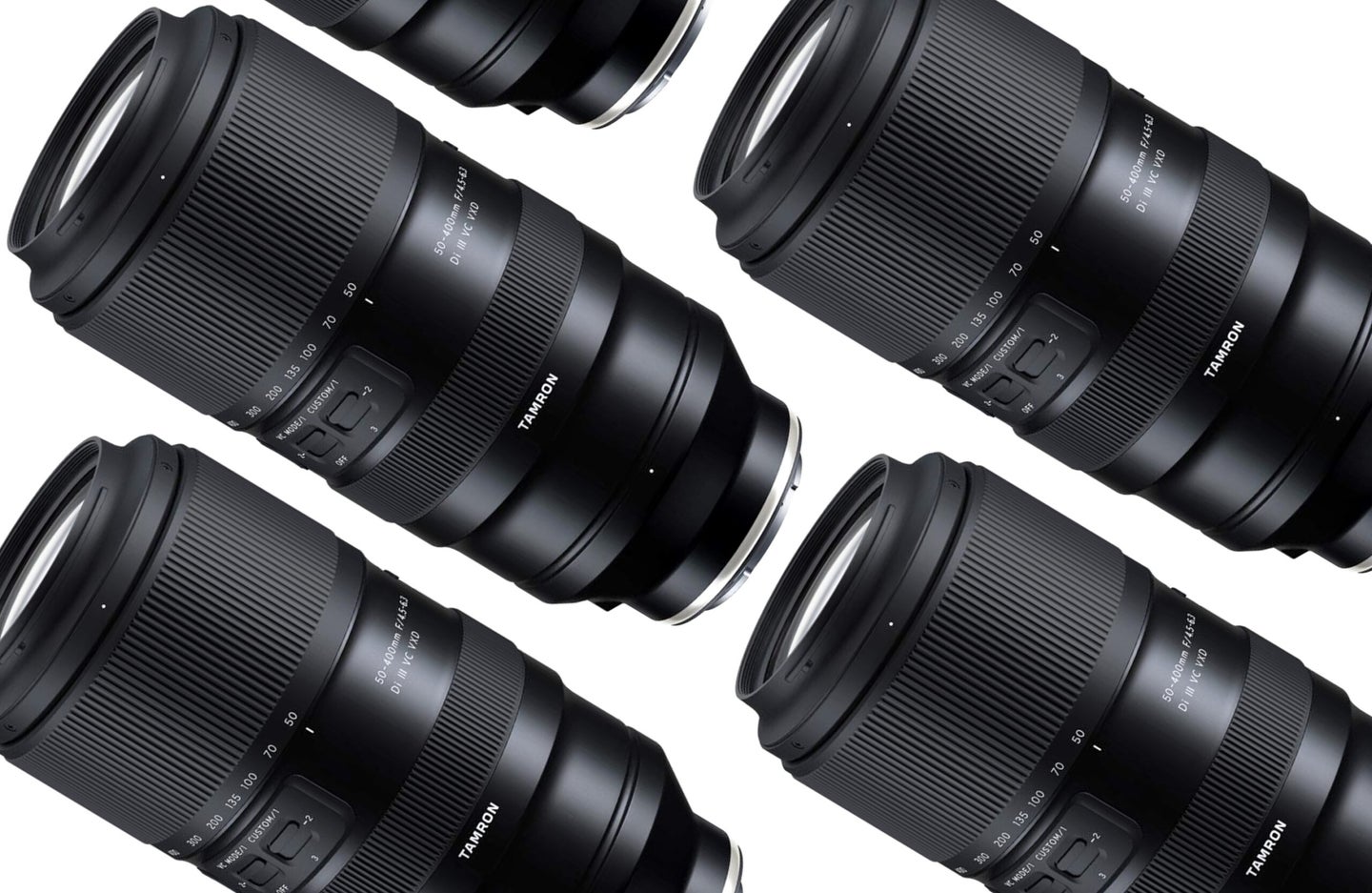Tamron’s far-reaching 50-400mm f/4.5-6.3 full-frame zoom is coming this fall
Pair it with a 24-70mm lens and you could have an almost 17x zoom range from just two optics, with no focal length left uncovered.

If you want a really far-reaching telephoto zoom for your full-frame Sony E-mount camera right now, either Sigma or Sony’s 100-400mm lenses are probably your best bets (unless you’re a part-time bodybuilder). That could be changing, though, if rival lensmaker Tamron plays its cards right.
The company revealed this week that it’s developing a lens that will not only compete with both of these optics but actually better their reach. With the Tamron 50-400mm f/4.5-6.3 Di III VC VXD, it plans to differentiate its offering by giving photographers significantly more reach at the *other* end of the zoom range.
Related: Best Sony cameras for any photographer
Who’s it for?
As a 2.5-pound lens, this clearly still won’t be everyone’s cup of tea. If you’re a sports shooter, wildlife photographer, or birder, though, this could be a great choice that will help you cut down on the weight and size of your camera bag without sacrificing on versatility or leaving useful focal lengths uncovered.
Build quality
Impressively, given that it has a significantly greater zoom range, Tamron says that the new 50-400mm f/4.5-6.3 will be just 7.2 inches in length, which is actually 0.5-0.9 inches shorter than either Sony or Sigma’s 100-400mm lenses. And it’s almost the same weight as the lighter of the pair, too. Tamron’s predicted weight of 2.54 pounds is just 0.6 ounces lighter than that of the Sigma, and 8.5 ounces lighter than the Sony.
As well as a zoom ring with a short 75-degree throw at the front, and a focus ring further back, Tamron’s press image also shows a three-position custom switch and a vibration compensation switch. The latter provides two different operating modes, or it can be switched off altogether.
Unseen on the other side of the lens barrel is a zoom lock switch, and there’s likely a focus limiter button as well, as Tamron references the function being available in software. Up front, a set of 67mm threads stand ready to accept the same filters as used by most of the company’s other lenses, potentially helping to save you some cash.
Tamron describes the lens as “moisture resistant,” implying that there is likely some degree of weather-sealing, although we don’t yet have any specifics. Nor do we yet know anything else about the construction or materials, but the company does note that it has paid close attention to the lens’ ergonomics and exterior texture. We’re also told that the new exterior finish has better scratch resistance.
There’s also a connector on the lens for use with Tamron’s Lens Utility software. No tripod mount is included, but an optional Arca Swiss mount will be available.
Focus
The Tamron 50-400mm f/4.5-6.3 Di III VC VXD’s name hints at Tamron’s chosen autofocus technology. Employing what the company refers to as a VXD linear motor — that’s short for Voice-coil eXtreme-torque Drive — it’s said to be both very quiet and swift-focusing. Compatibility with tech like Sony’s Eye AF and fast hybrid AF functions are touted, suggesting that Tamron has also done its due diligence in this important area of the design.
Focusing is possible to a minimum distance of 9.8 inches at the lens’ 50mm wide-angle position, which yields a maximum magnification of 0.5x (1:2), or as Tamron calls it, “half macro”. This should make the lens more versatile for macros than its Sony rival, which has a maximum magnification of 0.35x (1:2.9).
The Sigma will remain the best choice if you want some macros of smaller or more skittish subjects, however, thanks to its 0.71x (1:1.4) maximum magnification which is also achieved from a more reasonable 3.6-foot minimum focusing distance.
Optical design
So how has Tamron achieved all of this? Sadly, it has yet to disclose anything of the optical formula beyond the use of a dust-and-moisture resistant fluorine coating, and so we can only speculate for now.
The company does promise “unfaltering high image quality across the entire zoom range”, though. That likely implies the use of a complex optical formula with some exotic elements, given that this lens is also so compact and lightweight, relatively speaking.
Pricing & availability
Since this is only a development announcement at this time, Tamron has yet to offer a precise release date for its new lens, and nor has it disclosed a target price. Given the lens’ unique nature and likely optic complexity, you’ll probably want to temper your expectations about its affordability.
Thankfully, you don’t have too much longer to wait. Pandemic and supply-chain issues allowing, the first shipments are expected to arrive this fall.
